A new brand has been born! While many supplement brands exist, most don't stand out from the crowd. Their formulas are standard and often differ from nearly identical products by only a few milligrams of typical ingredients, or a slightly different look.
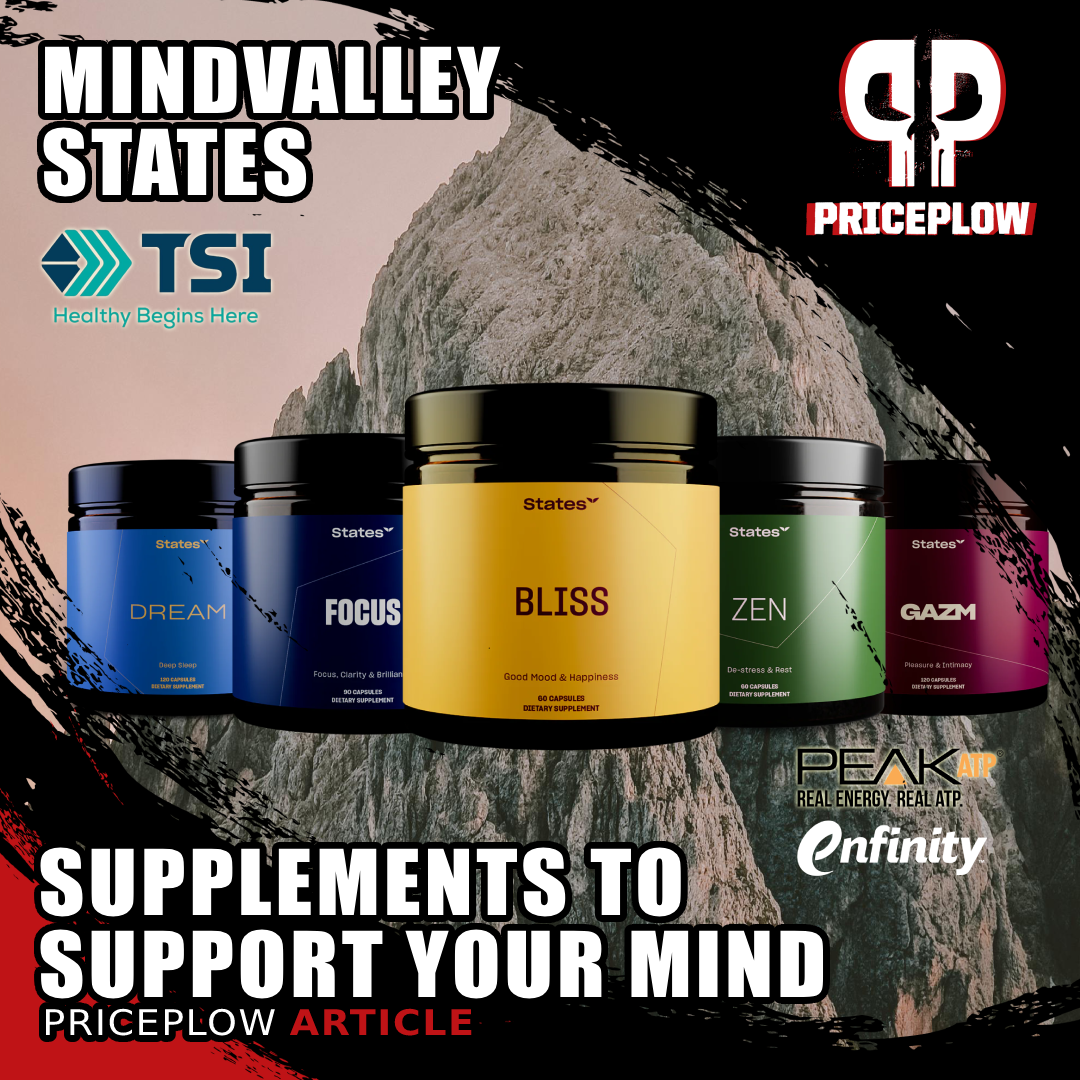
Mindvalley States is here! 5 supplements for mind modes like Bliss, Focus, Zen, Dream, and Gazm—featuring innovative ingredients like enfinity paraxanthine & Peak ATP to support your state of mind.
But every so often, a brand emerges with a commitment to the unique. Mindvalley States is one such company. They launched with five products, each designed to help your mind enter specific modes.
Mindvalley States: Control Your Mind
At launch, the Mindvalley lineup includes:
- BLISS – for mood and happiness
- FOCUS – for productivity in work sessions
- ZEN – for relaxation
- DREAM – for deep, restful sleep
- GAZM – for bedroom performance
Leaning into the TSI Group armory with enfinity paraxanthine and Peak ATP
What makes each formula unique is their comparatively short ingredient lists. There are no fillers here — only the most effective components for each respective "mind state". Of particular note is BLISS, which utilizes enfinity paraxanthine, and FOCUS, which contains both enfinity and Peak ATP. These two ingredients are among our top "ones to watch" -- we always appreciate brands that include them in their formulas.
We'll dive into the formulas of each product, but first, let's check PricePlow for good Mindvalley deals and watch our video review of the new lineup:
Mindvalley States Focus – Deals and Price Drop Alerts
Get Price Alerts
No spam, no scams.
Disclosure: PricePlow relies on pricing from stores with which we have a business relationship. We work hard to keep pricing current, but you may find a better offer.
Posts are sponsored in part by the retailers and/or brands listed on this page.
This area is reserved for Team PricePlow's upcoming Brand Introduction video.
Subscribe to our channel and sign up for notifications so you catch it when it goes live!
Mindvalley BLISS
-
Synapse (320mg)
Bacopa monnieri, a perennial herb used in Ayurvedic medicine, is known for its mood-boosting, stress-relieving, and cognitive-enhancing properties. Rich in bacosides, which are similar to neuroprotective beta-glucans, Bacopa helps reduce cortisol levels, alleviating stress and anxiety.[1,2]
-
CurcuPrime (250mg)
Tetrahydrocurcumin is a derivative of curcumin that offers a range of anti-inflammatory benefits[3], including the ability to help regulate blood sugar levels.[4-7] Research shows that 4-HC boasts far better absorption, leading to more potent outcomes.[8] It's hard to be blissful when you're inflamed!
-
enfinity (100mg)
enfinity, a patent pending and trademarked form of paraxanthine distributed by TSI Group, is a new alternative to caffeine making significant waves in the supplement industry.
While caffeine is widely used to reduce fatigue and boost performance, it metabolizes into three compounds: paraxanthine, theobromine, and theophylline.
A new study finds paraxanthine (found in enfinity®) outperforms caffeine in boosting cognitive function after a 10k run.[9] Clear thinking under pressure is key to winning, and paraxanthine could be the edge you need.
Research suggests that paraxanthine, the primary metabolite, is responsible for most of caffeine's desired effects, such as fat burning,[10] adenosine inhibition,[11] and improved cognitive function. Paraxanthine has also been shown to be more effective than caffeine in enhancing athletic performance and mental accuracy,[12,13] while theobromine and theophylline may contribute to caffeine's negative effects, such as sleep disturbances, due to their longer half-lives.
One of paraxanthine's advantages is its shorter half-life (3.1 hours), allowing it to clear from the body faster than theobromine and theophylline, reducing the likelihood of sleep disruption and other side effects.[14] This makes paraxanthine particularly suitable for those who metabolize caffeine slowly and may experience jitters or nervousness with regular caffeine use.
New research shows paraxanthine increases energy expenditure and post-workout cognition
The stimulatory feel isn't the only reason enfinity's in BLISS. This past year, we've covered two studies showing that paraxanthine outperforms caffeine in post-10k cognitive tests[9] and that paraxanthine increases energy expenditure (100 calories in 3 hours) while decreasing hunger![15] Now that's some research to get blissful about!
Paraxanthine is the primary metabolite of caffeine, providing most of caffeine's beneficial effects. Now you can take it directly with enfinity!
There's more to the backstory, including an incredible podcast worth listening to -- check it out in our main article, "Paraxanthine: Caffeine's Major Metabolite for Laser-Targeted Energy".
But Mindvalley States isn't done with with the stimulatory effects yet:
-
Citrus aurantium Extract (50mg)
Bitter orange (citrus aurantium) extract contains two key bioactive compounds, synephrine and hordenine, that promote fat loss. Synephrine, a beta-3 adrenoceptor agonist, speeds up metabolism, while hordenine, a beta-2 adrenergic receptor agonist[16] and MAOI,[17,18] raises basal metabolic rate[19] and enhances energy, motivation, and focus by prolonging the action of neurotransmitters.
However, looking at the BLISS label, you'll actually see that it's standardized for nobiletin. This is a flavone from citrus fruits that's been shown to improve cognitive deficits,[20] along with other metabolic enhancements it can provide.
-
Affrom (28mg)
Affrom is a saffron extract derived from the Crocus sativus flower, used in traditional medicine to enhance mood and emotional well-being. Clinical research shows it regulates neurotransmitters, particularly increasing serotonin, which helps stabilize mood and reduce stress.[21] Studies from 2004 and 2006 demonstrated that 30 mg of saffron daily is as effective as antidepressants for treating mild to moderate depression.[22,23]
-
Zembrin (25mg)
Zembrin, a patented extract of Kanna, is a key ingredient in BLISS. Used for over 300 years in traditional South African medicine, Kanna enhances resilience during high-stress situations.[24,25]
Zembrin works through two mechanisms: inhibiting serotonin reuptake, which helps regulate mood and alleviate anxiety, and blocking phosphodiesterase-4 (PDE-4),[26,27] which enhances cognitive function and memory by increasing cyclic adenosine monophosphate (cAMP) levels.[27-30]
This is the most-studied form of kanna on the market, and we're big fans of combining it with enfinity paraxanthine -- that's why we included it in our experimental XPO NRG energy drink collaboration!
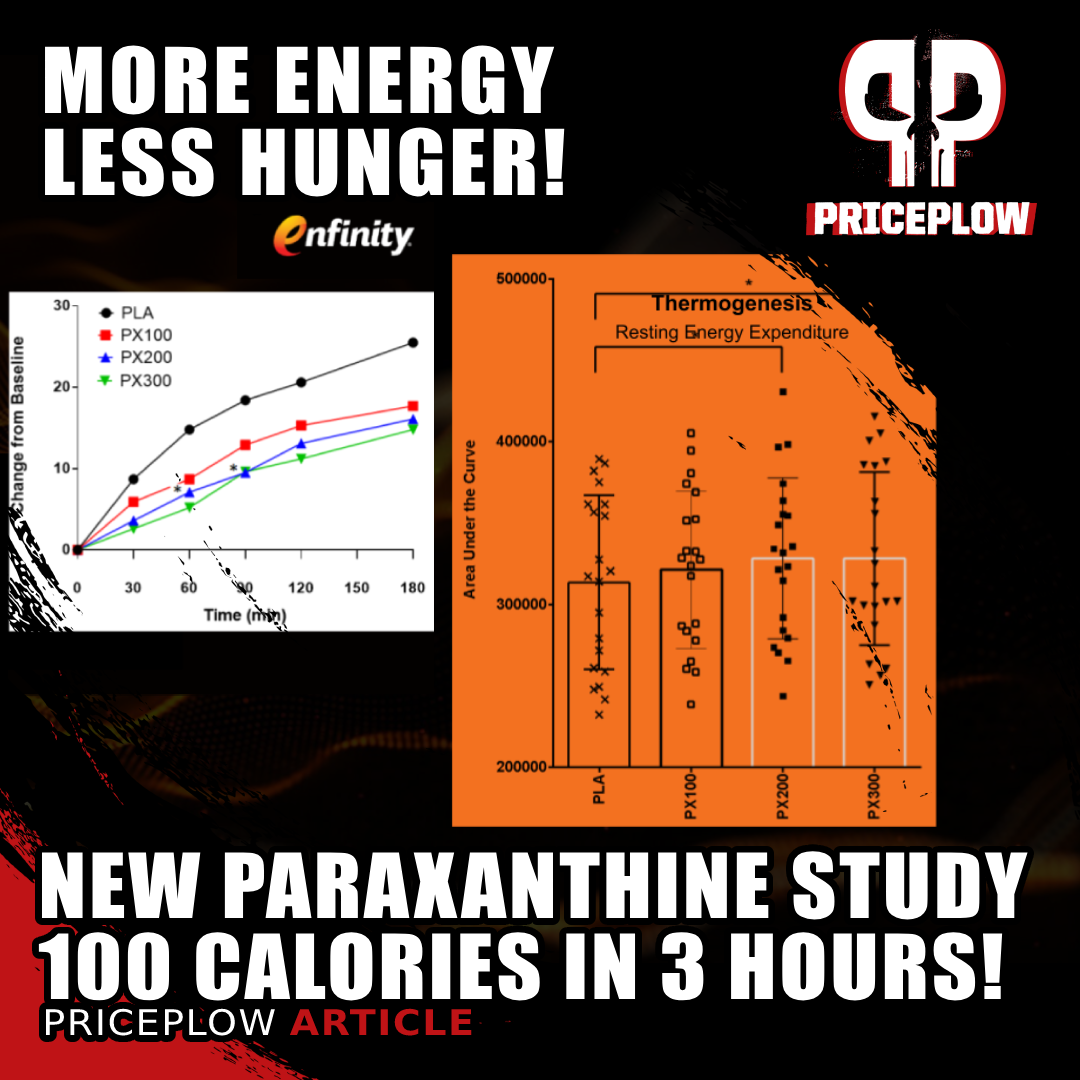
New research data has been published on enfinity (paraxanthine), showing increased energy expenditure compared to placebo (100 calories in 3 hours) -- yet it decreased appetite and heart rate![15]
Mindvalley FOCUS
-
L-Tyrosine (500mg)
Tyrosine plays a key role in producing catecholamines like adrenaline and dopamine, which help maintain alertness[10] and stimulate the fight-or-flight response, crucial for pushing harder in the gym or study hall. Studies support the efficacy of tyrosine in doses ranging from 500 to 2,000 mg.[31]
-
Peak ATP (400mg)
ATP, or adenosine triphosphate, is the "energy currency" of the body, powering cellular functions.[32] Peak ATP, a patented disodium ATP ingredient, is highly charged and vital for energy production. Research shows that taking 400 mg of Peak ATP before workouts or meals can reduce fatigue,[33,34] increase strength and power,[35] improve body composition,[36] and enhance muscle health during stress.[37] It has also been linked to better recovery, pain reduction, and cardiovascular health improvements.[38]
Recent studies indicate that Peak ATP can mitigate cognitive decline following strenuous exercise, enhancing attention and processing speed.[39] Increased blood flow post-exercise has been observed in users of Peak ATP,[40] and a 2024 meta-analysis confirmed that supplementation leads to greater gains in maximal strength compared to placebo,[41] solidifying its effectiveness in both physical and mental performance.
Peak ATP is a patented oral ATP supplement that's been shown to increase blood flow, boost muscle activation through calcium release, and help boost muscle mass, strength, and recovery. This article covers the biochemistry, mechanism, and human research in detail.
There's much more covered in our main article, "PEAK ATP: The Ultimate Guide to Disodium ATP Supplements".
What's unique is that Peak ATP is used in a nootropic supplement, whereas it's typically found in workout supplements. Given ATP's whole-body impact and the universal support of improved blood flow, it makes sense to include it in a mind-body supplement!
-
GeniusPure (300mg)
Alpha-GPC is a choline-based supplement known for enhancing cognitive functions like learning and memory by increasing acetylcholine levels.[42,43] It also has ergogenic benefits, such as boosting strength, power, and potentially growth hormone and thyroid levels.[44,45]
-
enfinity paraxanthine (300mg)
See enfinity description above.
Exercise can create a feeling of mental fatigue by eliciting deficits in attention and processing speed. A study published in 2023 showed that PEAK ATP® helps mitigate deficits in several cognitive tasks following exercise.[39]
We love including enfinity in nootropic supplements because it provides the benefits of caffeine without the jittery side effects caused by its metabolites. This is a dose you'll feel, but it won't put you over the top.
-
L-Theanine (100mg)
L-theanine is a naturally occurring amino acid in tea leaves that acts as a neurotransmitter,[46] promoting relaxation and reducing anxiety without sedation.[47-49]
In a focus context, theanine pairs well with caffeine to help smooth out the energy curve, and we suspect it'll work beautifully with paraxanthine as well.
Again, we align with Mindvalley States in their formulation. Theanine is often used synergistically with caffeine, and although there's no specific research combining it with paraxanthine, we believe the benefits will be similar. This is why we included it in our hypothetical formulation in Formulator's Corner #13: A Restorative Nootropic with enfinity Paraxanthine. While our formula is theoretical, Mindvalley States made the combination a reality.
Mindvalley ZEN
-
Lemon Balm Extract (10:1)
Lemon balm (Melissa officinalis) is a mildly sedative herb commonly used in sleep formulas. It prevents the breakdown of GABA, a neurotransmitter that promotes relaxation, due to active compounds like rosmarinic, caffeic, and melitric acids.[50,51]
A pilot study demonstrated that lemon balm reduced anxiety by 18% and poor sleep symptoms by 42%,[52] using a dosage of 300 milligrams twice daily. Additionally, research indicates that lemon balm can improve mood and cognitive function.[53-55]
-
L-Theanine (200mg)
See above for more information on theanine.
-
Apigenin (200mg)
Apigenin is a flavonoid that activates benzodiazepine receptors in the brain, downregulating central nervous system (CNS) activity. It has shown therapeutic potential for diseases including Alzheimer's, cancer, amnesia, insomnia, and depression.[56] This effect is largely attributed to its support of ATP production and protection of mitochondria from oxidative damage.[57]
-
RhodioPrime 6X (150mg)
Rhodiola crenulata is high in salidroside, a key compound responsible for many of its bioactive effects.[58,59]
Salidroside has been shown to improve cognition, reduce stress, anxiety, and depression, and enhance athletic performance and glucose metabolism through mechanisms such as MAO inhibition,[60] increased oxygen utilization,[61] and upregulation of neurotransmitters.[62]
-
Magnolia Extract (10mg)
Magnolia bark extract inhibits the enzyme HSD-11β, reducing the conversion of cortisone to cortisol, potentially lowering overall cortisol levels. This reduction in cortisol alleviates stress, anxiety, and related issues.[63-66]
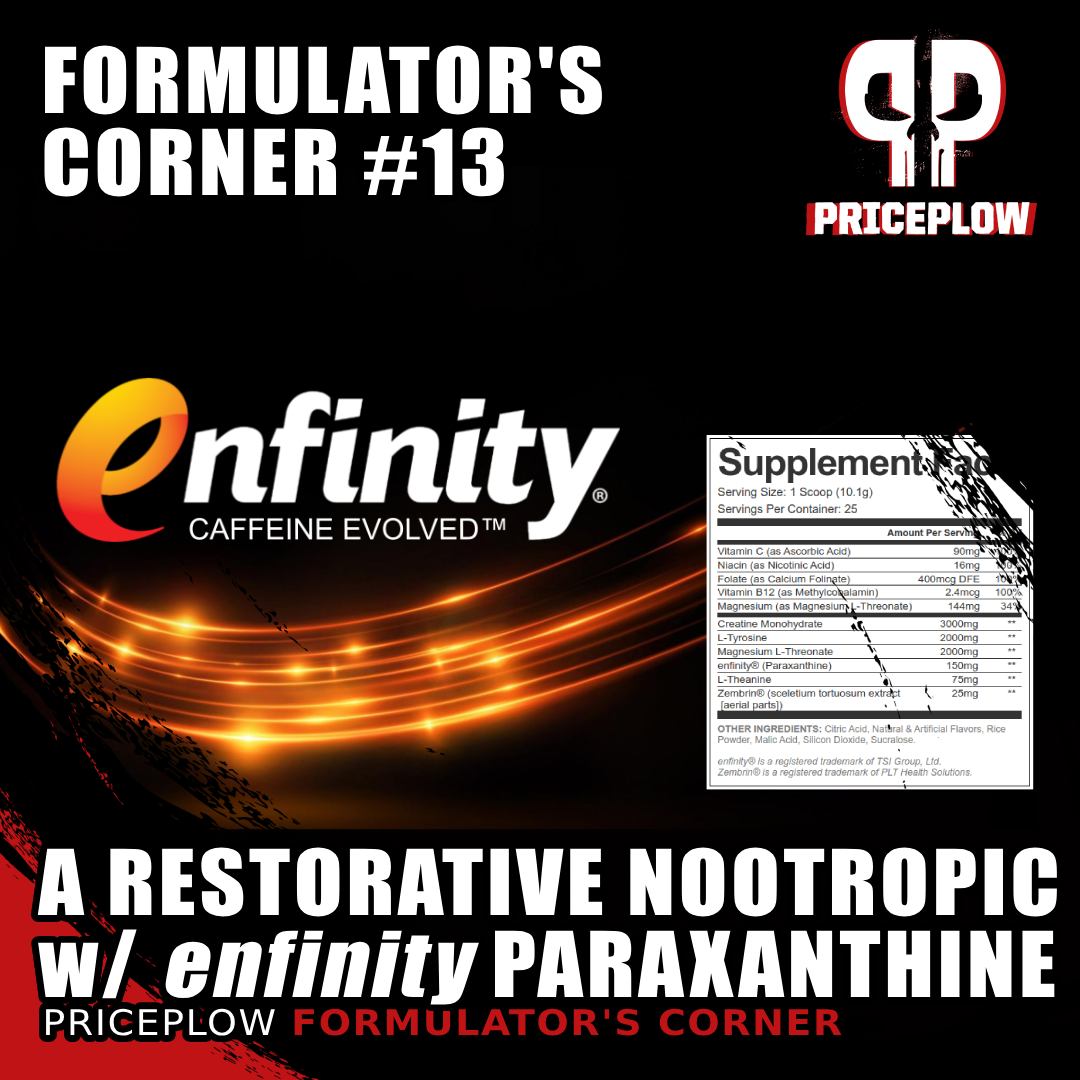
For PricePlow Formulator's Corner #13, we tackle the challenge of creating a stimulant-based nootropic that boosts focus without disrupting sleep, using enfinity paraxanthine as the foundation.
Mindvalley DREAM
-
ezGABA (750mg)
Gamma-aminobutyric acid (GABA) is the brain's primary inhibitory neurotransmitter. It reduces neuronal excitability, promoting relaxation. Research shows GABA supplementation can increase alpha brain waves, indicating calmness and relaxation, while decreasing wakefulness-promoting beta brain waves.[67,68] GABA has also been demonstrated to upregulate growth hormone (GH) by up to 400%.[69]
ezGABA is NNB Nutrition's slower-release form of GABA.
-
Mugwort Extract (450mg)
Mugwort, known as the "mother of herbs" during the Middle Ages, has been used for centuries for its antioxidant, hepatoprotective, antibacterial, and antifungal effects.[70]
Derived from the plant Artemisia vulgaris, Mugwort has been traditionally used in herbal medicine for its calming properties and potential to promote restful sleep. It's believed to have mild sedative effects that can help alleviate insomnia and reduce anxiety, thereby improving sleep quality.
Additionally, mugwort is known for enhancing dream recall and may contribute to more vivid and lucid dreaming experiences!
-
DMAE (150mg)
DMAE is a choline metabolite that crosses the blood-brain barrier[71] and may stimulate cholinergic receptors, leading to increased acetylcholine levels,[72] although it is not a precursor itself.
In the context of sleep, DMAE may help improve sleep patterns by supporting the balance of acetylcholine levels in the brain. This balance can potentially enhance REM sleep cycles, leading to deeper and more restorative sleep. It's worth noting that research on DMAE's effects on sleep is limited, and it is more commonly recognized for its cognitive support benefits.
-
Melatonin (0.5mg)
Melatonin helps manage the body's circadian rhythm by signaling when to sleep and wake up.[73] It's commonly used in supplements to assist with sleep schedule adjustments, particularly during significant transitions, such as switching from late-night to early-morning routines.
Studies show melatonin supplements can ease this adjustment and help with sleep disturbances like insomnia and migraines.[74,75]
Mindvalley GAZM
-
Nitrosigine (1.5g)
Nitrosigine is a complex of inositol-stabilized arginine silicate that provides a highly bioavailable form of arginine. Arginine is an amino acid that boosts nitric oxide production, commonly used in pre-workout supplements to achieve the classic pump from increased blood flow due to nitric oxide.[76]
-
Beet Root Powder (400mg)
Like Nitrosigine, beet root powder increases nitric oxide production.[77,78] Additionally, it improves aerobic efficiency[79-82], recovery speed, cellular energy,[83-85] and endurance.[86]
-
Tongkat Ali (200mg)
Tongkat Ali, a plant native to Southeast Asia, has been used for centuries to enhance male virility and sexual prowess.[87] It has been shown to increase libido by 4-10.8%,[88] the frequency of erections,[89] and even testosterone levels.[90]
-
Shoden Ashwagandha Extract (120mg)
Ashwagandha, a traditional adaptogen, balances the body's stress response and has gained popularity in the sports supplement industry for managing physical and mental stress.[91-94]
The Shoden extract is notable for its high concentration of withanolides (35%), significantly higher than the commonly used KSM-66 extract, which contains only 5%. This high withanolide content enhances ashwagandha's benefits, including reducing oxidative stress, inflammation, anxiety, and depression, while improving immunity.[91-94]
Premium Products with Premium Ingredients
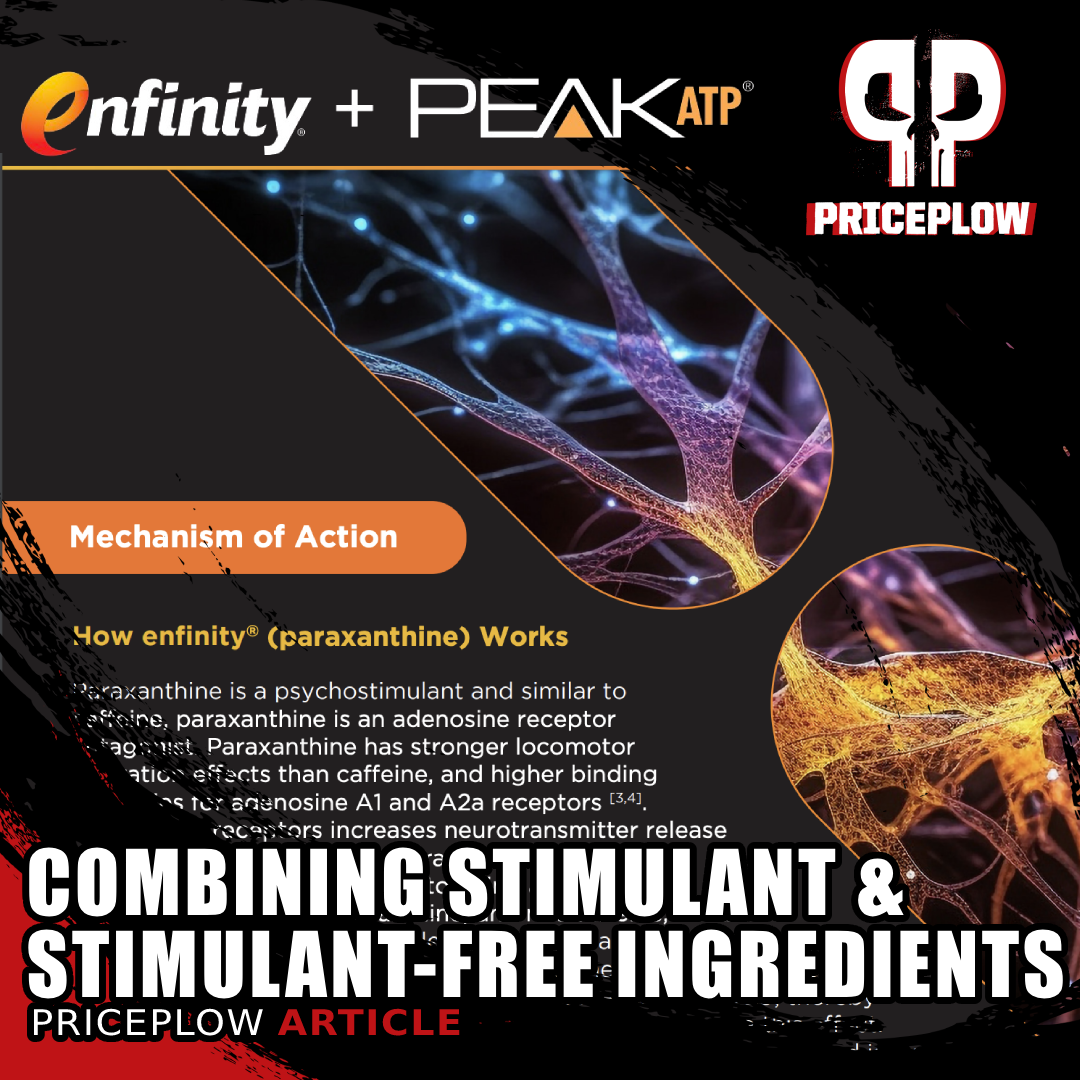
The unique synergy between Peak ATP and enfinity, designed to enhance physical and cognitive performance.
We've only scratched the surface of what each ingredient can do, but Mindvalley States has created premium products with the most effective ingredients on the market. These formulas are cutting-edge, featuring enfinity paraxanthine and Peak ATP. These ingredients represent the next generation of supplement formulation, and Mindvalley States is getting in on the ground floor.
The brand's formulation and direction are unique. We're seeing combinations we've dreamed up (enfinity and L-theanine), fascinating ingredients we rarely cover (mugwort extract), and a new use case for Peak ATP as a nootropic. This will be a fun brand to watch, and we're glad they partnered heavily with novel ingredient firms like NNB Nutrition and TSI Group.
For more great products and information, stay tuned to our TSI Group news alerts on PricePlow:
Subscribe to PricePlow's Newsletter and Alerts on These Topics
Mindvalley States Focus – Deals and Price Drop Alerts
Get Price Alerts
No spam, no scams.
Disclosure: PricePlow relies on pricing from stores with which we have a business relationship. We work hard to keep pricing current, but you may find a better offer.
Posts are sponsored in part by the retailers and/or brands listed on this page.
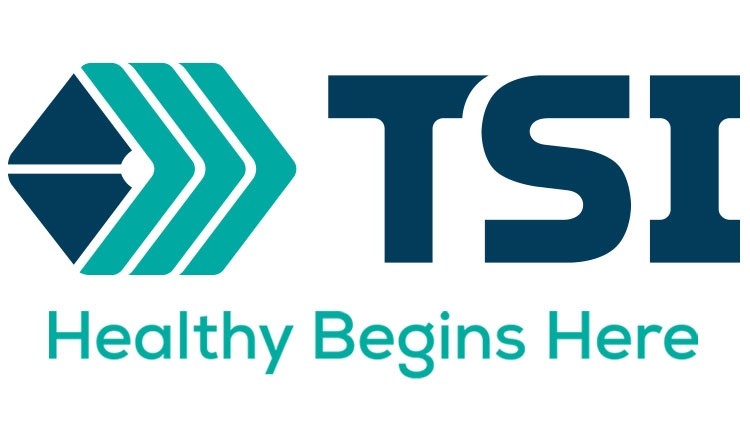
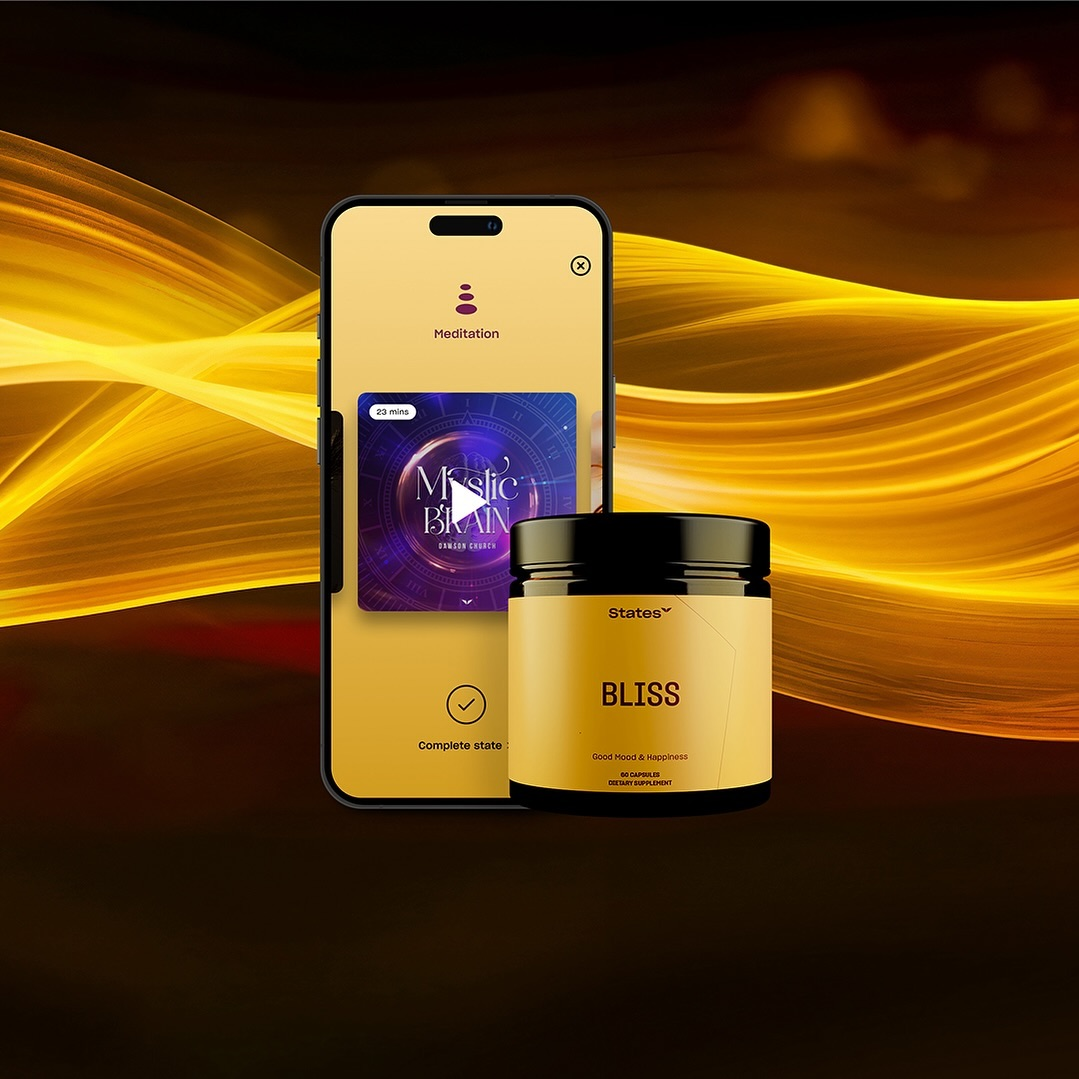
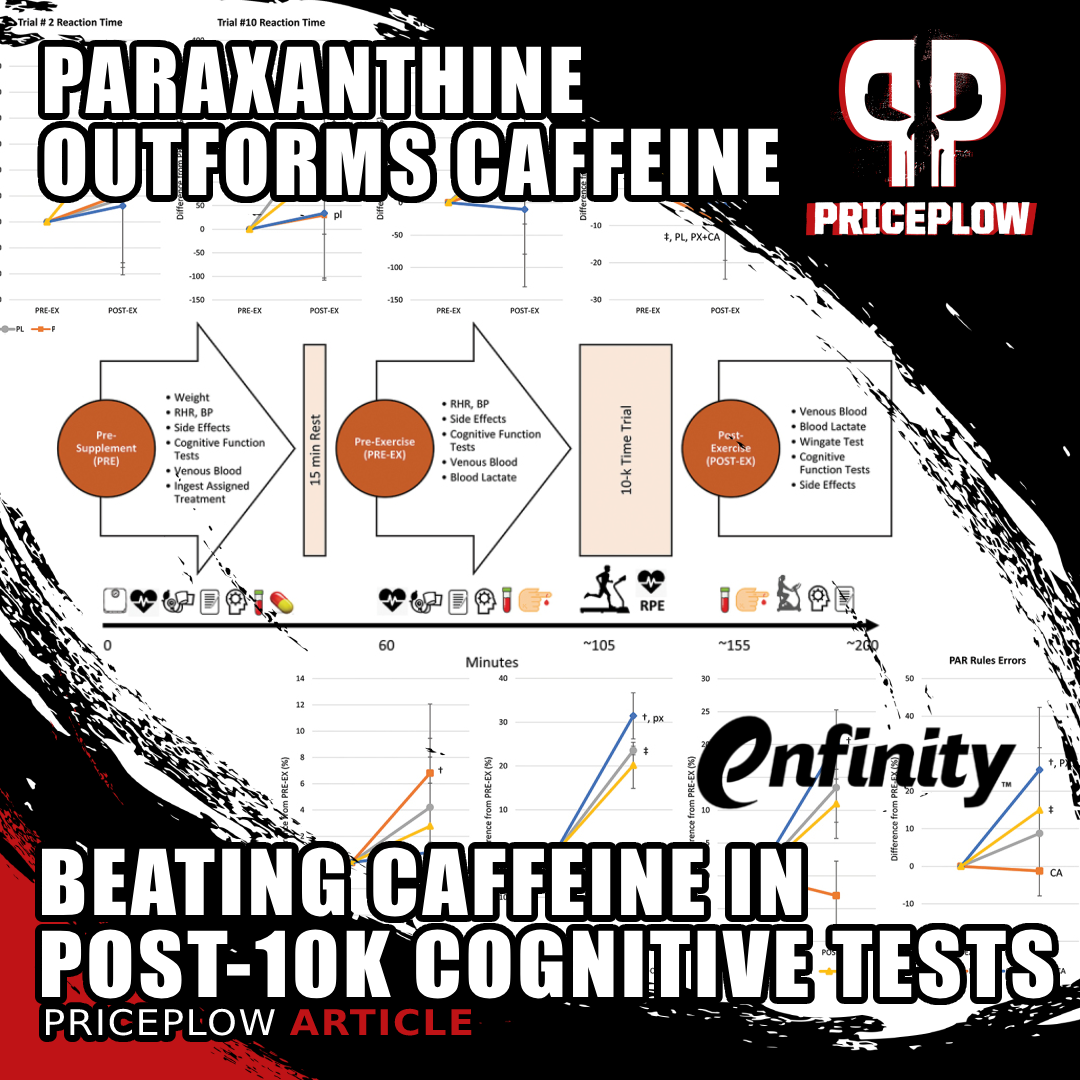
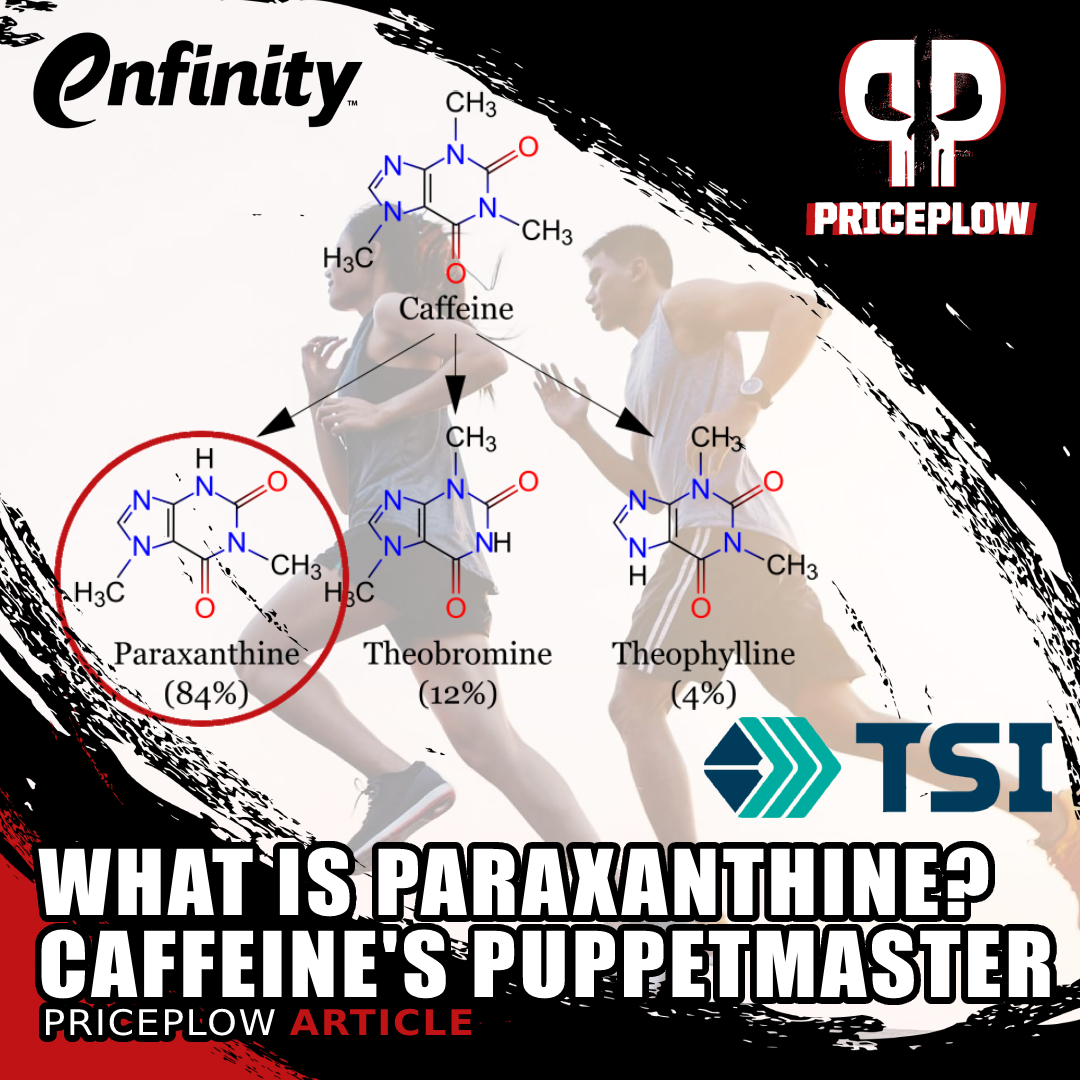
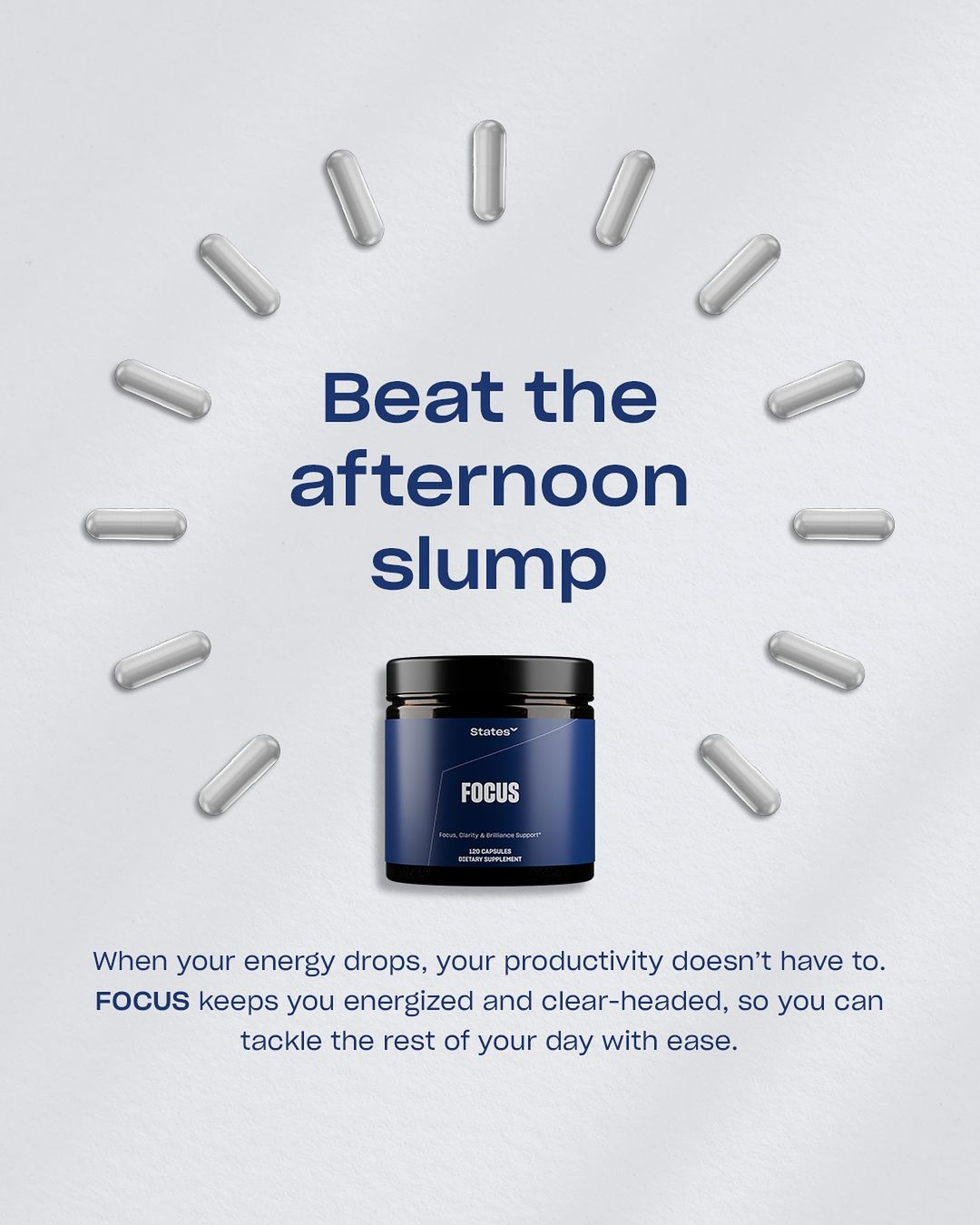
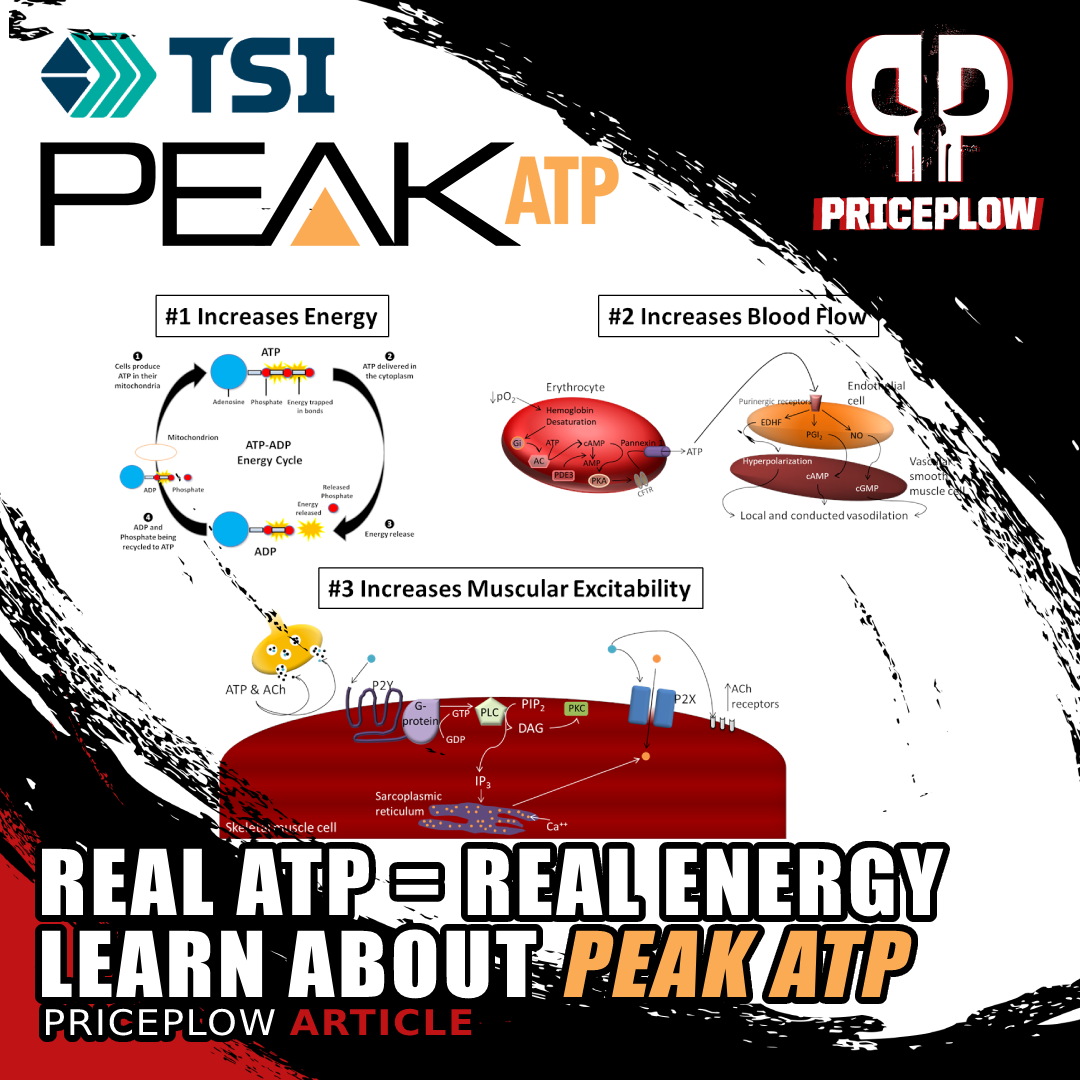
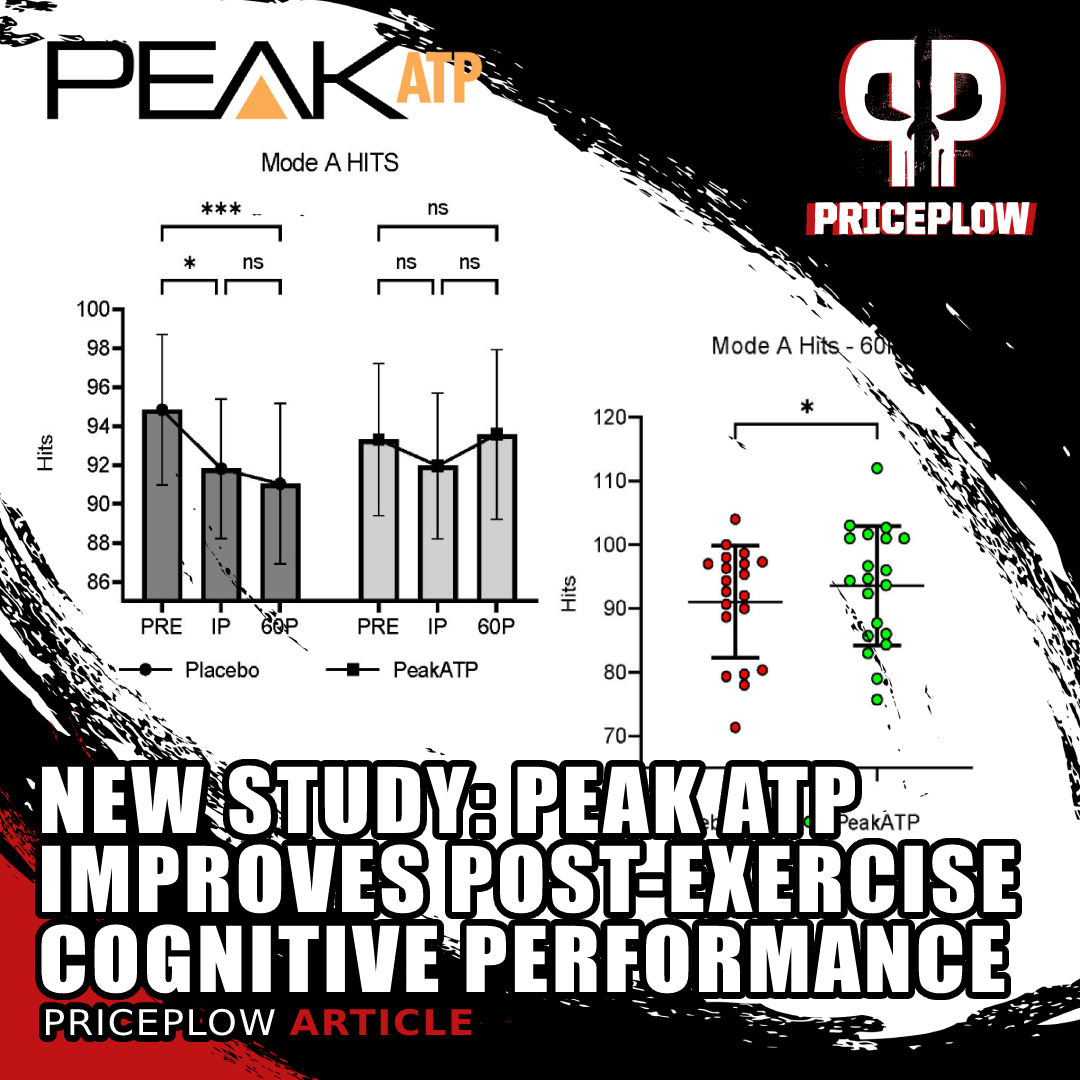
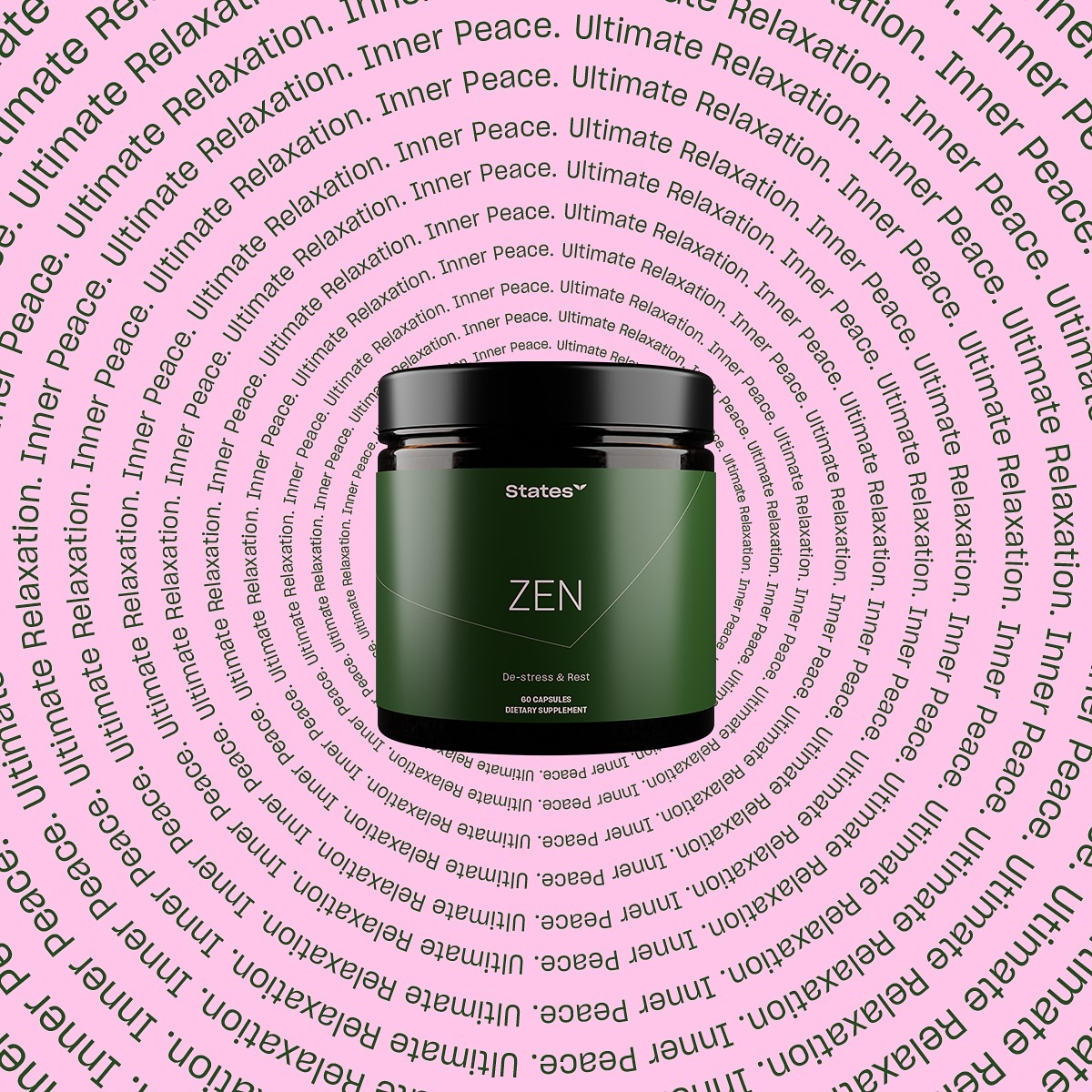
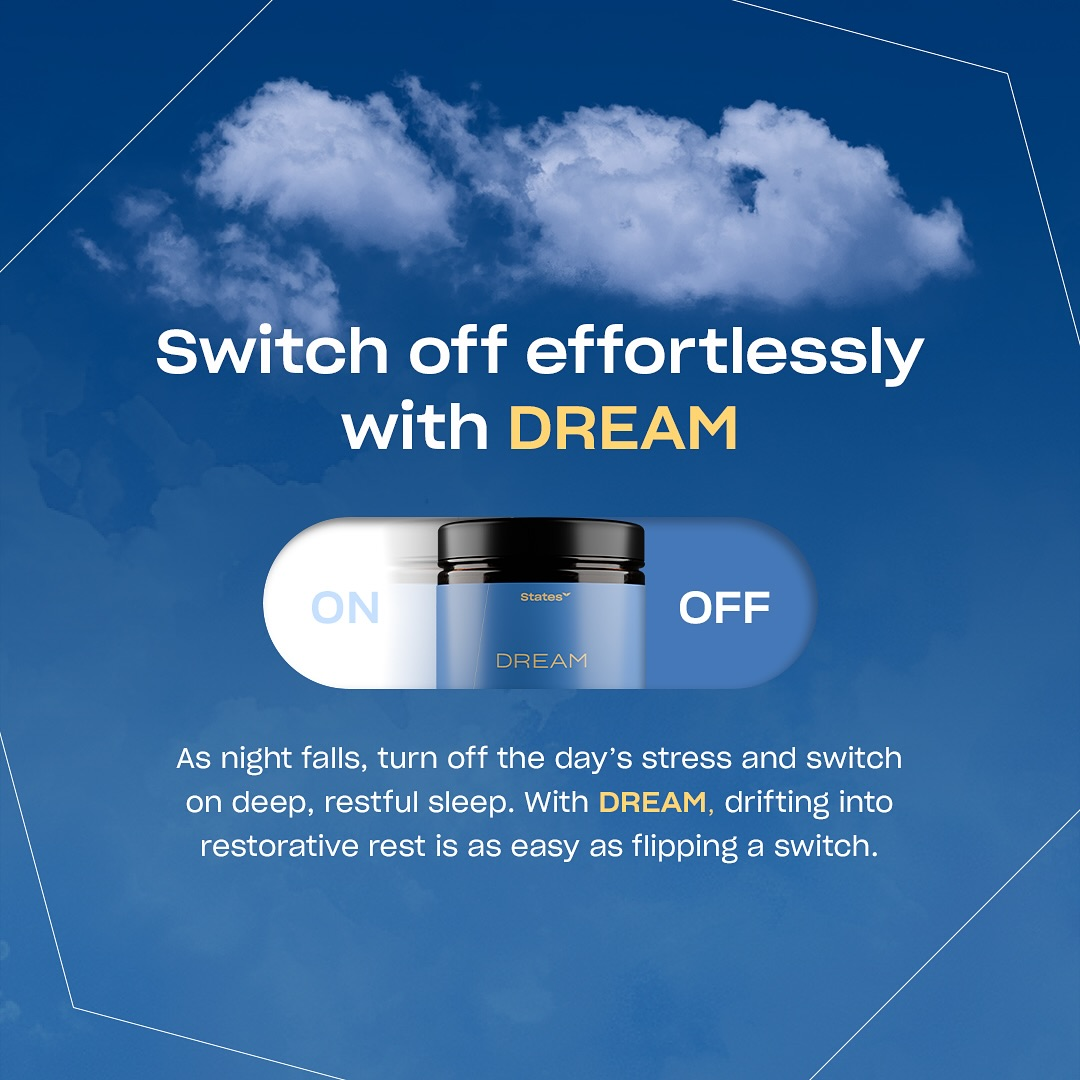
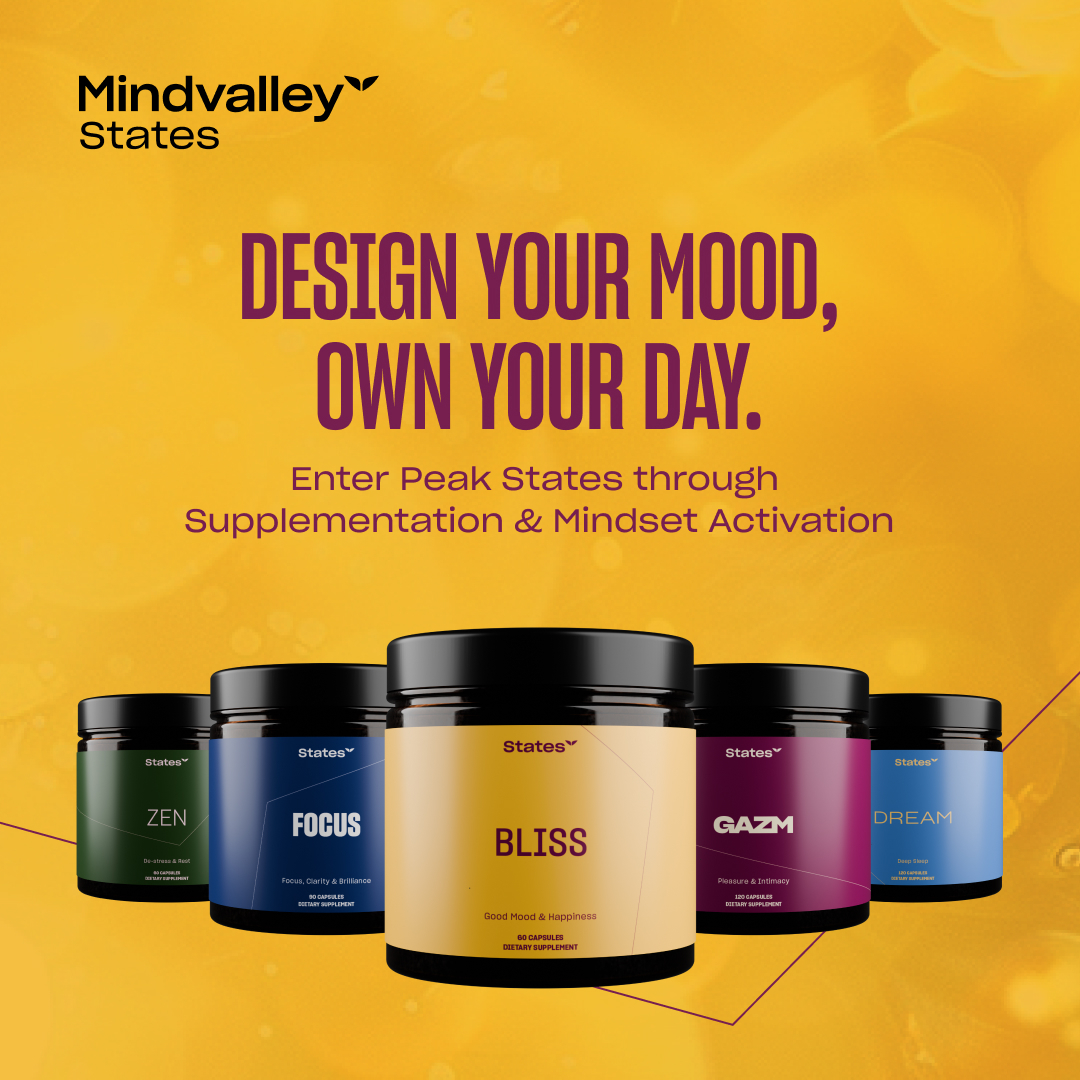
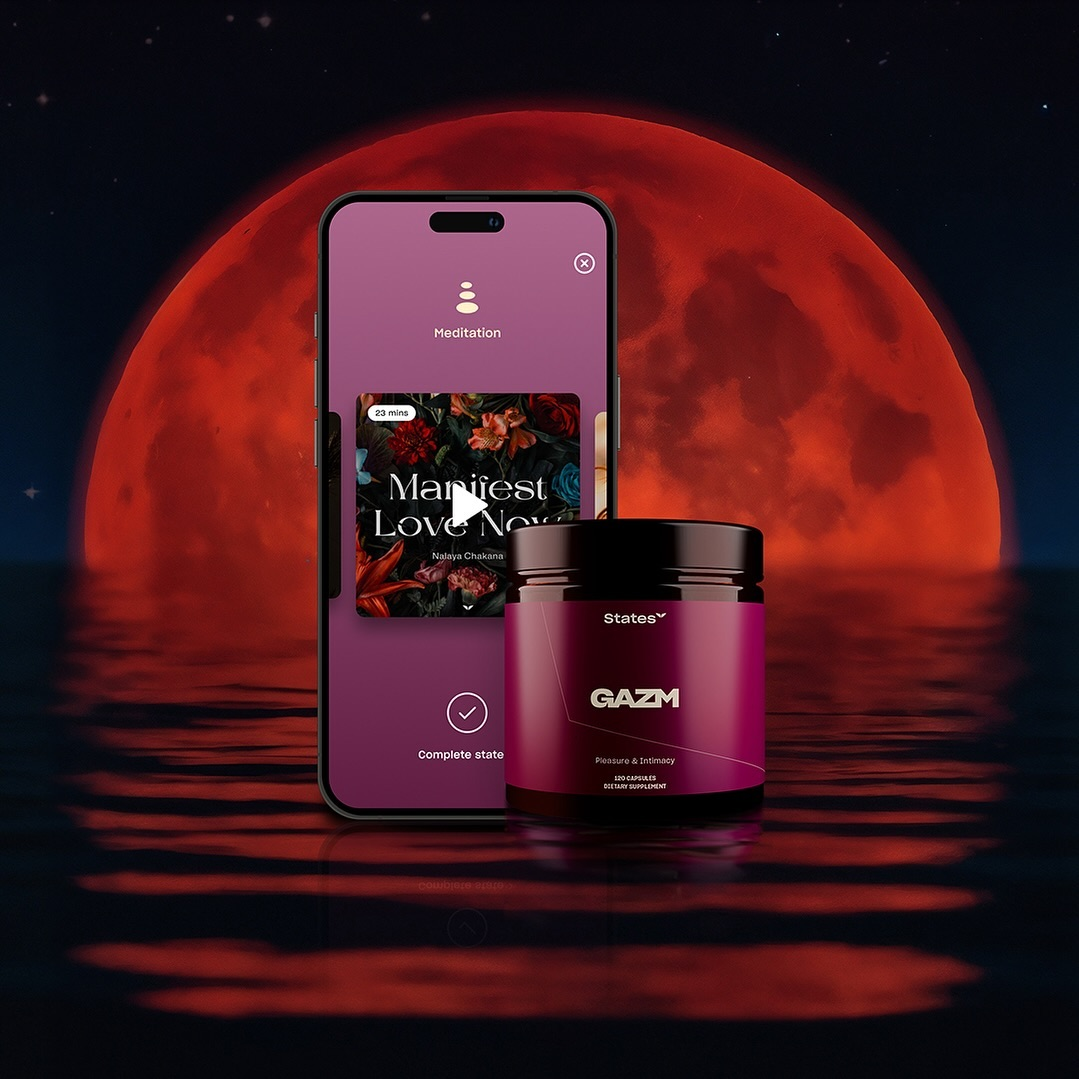


Comments and Discussion (Powered by the PricePlow Forum)